Empanadas Venezolanas, a delightful culinary treasure from Venezuela, offer a unique taste experience that tantalizes the taste buds. This article delves into the world of these crescent-shaped pastries, exploring their origins, ingredients, preparation methods, and regional variations. Whether you’re a food enthusiast or simply curious about Venezuelan cuisine, join us on this flavorful journey through the art of making Empanadas Venezolanas.
Introduction to Empanadas Venezolanas
Understanding Empanadas Venezolanas
Empanadas Venezolanas are more than just a dish; they’re a cultural icon, deeply rooted in Venezuelan heritage, similar to other empanadas found in various cultures. Originating from the indigenous communities, these corn flour-based delights have evolved over centuries, incorporating Spanish and African influences. Each region in Venezuela offers its unique twist, making empanadas a versatile and beloved part of the local cuisine.
The Origin and Cultural Significance
The history of Empanadas Venezolanas is as rich as their flavors. Initially made with ground maize, these pastries were a staple in the diet of indigenous tribes. The arrival of the Spanish brought new ingredients and cooking methods, enriching the recipe. Today, empanadas are a symbol of Venezuelan identity, often enjoyed during celebrations and family gatherings.
Varieties of Empanadas Venezolanas Across Venezuela
From the coastal regions to the Andean highlands, each area adds its flair to the empanada. In coastal areas, cazon (a type of small shark) is a popular filling, reflecting the abundance of seafood. In contrast, inland regions might favor beef, chicken, or cheese. This diversity showcases the rich tapestry of Venezuelan culinary traditions.
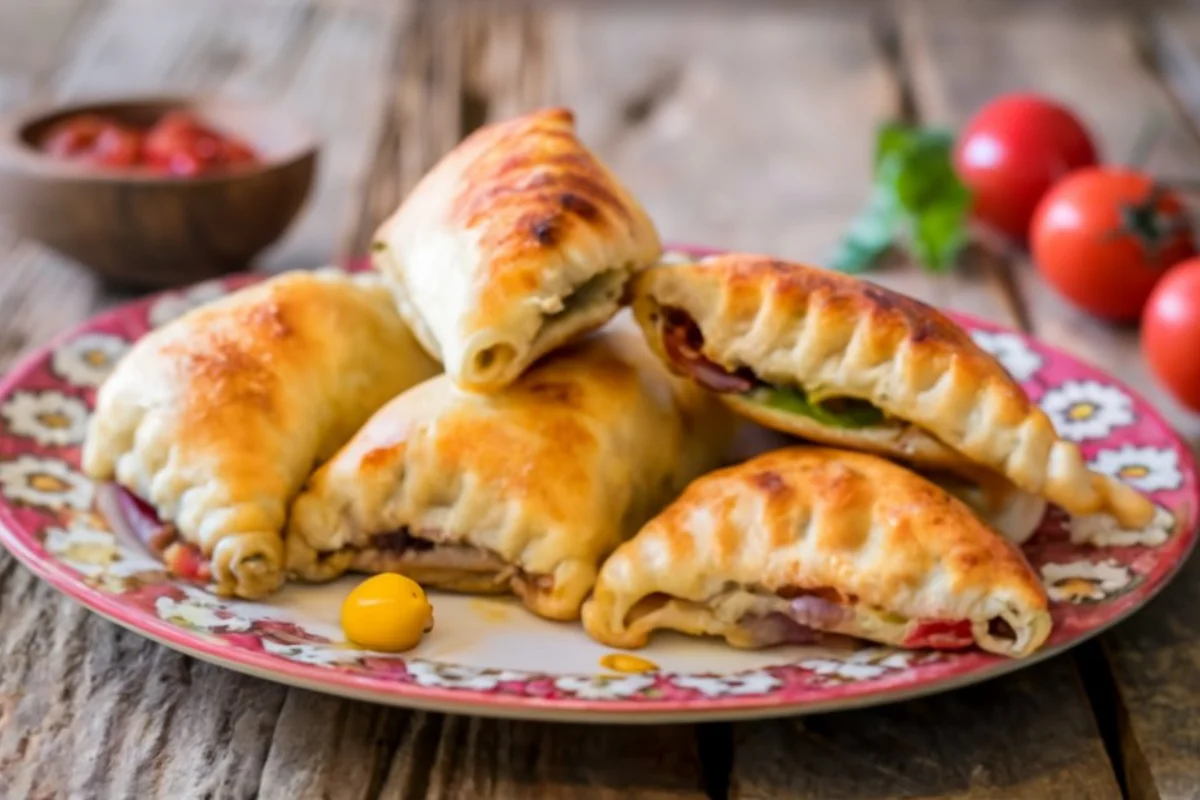
In the next section, we’ll dive into the traditional ingredients and preparation methods that make Empanadas Venezolanas a unique and irresistible treat. Stay tuned for a step-by-step guide on crafting these delicious pastries at home!
Traditional Ingredients and Preparation
Key Ingredients in Empanadas Venezolanas
When it comes to Empanadas Venezolanas, the magic lies in the simplicity and quality of the ingredients. Firstly, corn flour is the backbone of the dough, giving it that distinct texture and flavor. Additionally, the fillings vary widely but always prioritize freshness and local flavors.
Corn Flour – The Essential Base
Corn flour, specifically pre-cooked white corn flour, is the star of the show, as detailed in this Venezuelan empanadas recipe. It’s what sets Venezuelan empanadas apart from their wheat flour-based counterparts in other cultures. Not only does it provide a unique taste, but it also offers a gluten-free option for those with dietary restrictions.
Popular Fillings – From Cazon to Cheese
Furthermore, the fillings are where creativity shines. Cazon, a small shark, is a traditional choice, especially in coastal regions. However, cheese, beef, chicken, and black beans are also widely used. Each filling brings its own set of flavors and textures, making every empanada a new experience.
Step-by-Step Preparation of Empanadas Venezolanas
Now, let’s delve into the preparation process. Making Empanadas Venezolanas might seem daunting at first, but with these steps, you’ll be an expert in no time.
Making the Dough
Firstly, mix the corn flour with water and a pinch of salt. Knead until you have a smooth, pliable dough. It’s crucial to get the consistency right – not too dry, not too sticky.
Preparing the Fillings
Next, prepare your fillings. Whether it’s sautéed cazon, seasoned beef, or simple cheese, ensure it’s flavorful and not too wet. A juicy filling can make the dough soggy, which is something we want to avoid.
Frying Techniques
Finally, shape the dough into circles, add the filling, and fold them into half-moons. Seal the edges well, and then fry them in hot oil until they’re golden and crispy. The result? A perfect, mouth-watering empanada, much like the ones described in our article on air fryer empanadas and their crispy homemade guide.
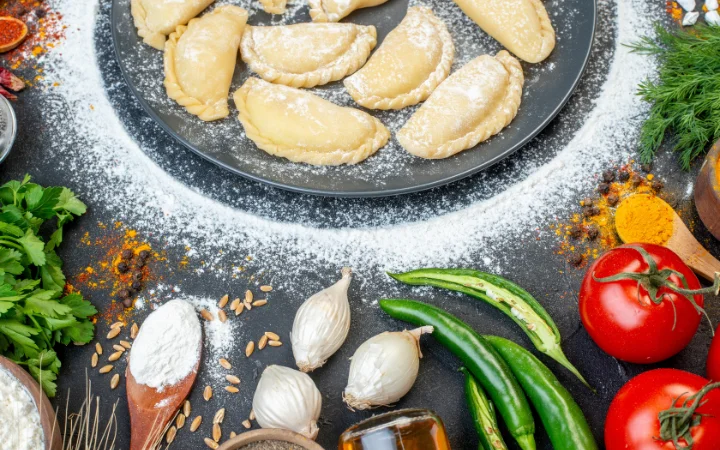
In the next part, we’ll explore the fascinating regional variations of Empanadas Venezolanas. Each region adds its unique touch, reflecting the diverse culinary landscape of Venezuela. Stay tuned for an exciting journey through the flavors of different Venezuelan regions!
Regional Variations of Empanadas Venezolanas
Exploring Regional Differences
Empanadas Venezolanas, a reflection of Venezuela’s diverse culinary landscape, vary significantly from one region to another. Each area infuses its unique cultural and geographical influences into these delightful pastries, creating a rich tapestry of flavors and styles.
Coastal vs. Inland Flavors
In coastal regions, the proximity to the sea plays a significant role in the choice of fillings, as seen in this Food Network recipe for Venezuelan empanadas. Cazon, a small shark, is a traditional and beloved filling in these areas, often seasoned with a blend of herbs and spices that highlight its fresh, oceanic flavor. Other seafood like shrimp or fish might also find their way into coastal empanadas, offering a taste that’s both unique and deeply rooted in the local seafood culture.
In contrast, inland regions, where agriculture and livestock farming are more prevalent, tend to favor fillings like beef, chicken, or pork. These fillings are often slow-cooked and seasoned with local spices, resulting in a rich, hearty flavor. In some areas, you might even find empanadas filled with goat meat, a delicacy in certain parts of Venezuela.
Influence of Local Ingredients
The influence of local ingredients extends beyond just the fillings. For instance, in regions where cheese production is a significant industry, cheese empanadas are particularly popular. These might include soft, fresh cheeses or aged varieties, each lending a distinct flavor to the empanadas.
In areas known for their beans, such as the Andean regions, black bean-filled empanadas are a common sight. These are often combined with other ingredients like plantains or cheese, creating a delightful blend of flavors and textures.
Moreover, the use of local herbs and spices in the dough and fillings adds another layer of regional distinction. Ingredients like cilantro, annatto, and chili peppers can transform a simple empanada into a culinary representation of its region.
Through these regional variations, Empanadas Venezolanas not only offer a delicious taste experience but also tell the story of Venezuela’s diverse geography and cultural heritage. Each bite is a journey through the different landscapes and communities that make up this vibrant country.
Empanadas Venezolanas in Modern Cuisine
Fusion and Innovation
The evolution of Empanadas Venezolanas in modern cuisine is a testament to their versatility and global appeal. As they travel beyond Venezuelan borders, these pastries are being reimagined in exciting and innovative ways, blending traditional flavors with contemporary culinary trends.
Contemporary Twists on the Classic
Chefs around the world are experimenting with empanadas, introducing new ingredients and techniques while respecting the dish’s roots, as explored in this home and family article on Venezuelan Chicken Empanadas. For example, some are using alternative flours like quinoa or amaranth for the dough, catering to health-conscious consumers and those with dietary restrictions.
Fillings are also seeing a modern makeover. Fusion fillings that combine Venezuelan flavors with other cuisines, such as Mexican or Asian, are becoming increasingly popular. Imagine an empanada filled with teriyaki chicken or a spicy chorizo and bean mixture – these combinations are not only innovative but also a celebration of global flavors.
Empanadas in Global Cuisine
The rise of Empanadas Venezolanas in global cuisine is evident in their presence in international food scenes. From high-end restaurants to street food markets, these pastries are being embraced by diverse audiences. In some cities, you might find empanada-focused eateries, offering a wide range of fillings and styles, including Venezuelan classics and inventive new creations.
Furthermore, the global popularity of Empanadas Venezolanas has led to their inclusion in culinary events and competitions. Chefs showcase their skills and creativity, often using empanadas as a canvas to express their culinary vision. This exposure not only highlights the versatility of empanadas but also fosters a deeper appreciation for Venezuelan cuisine.
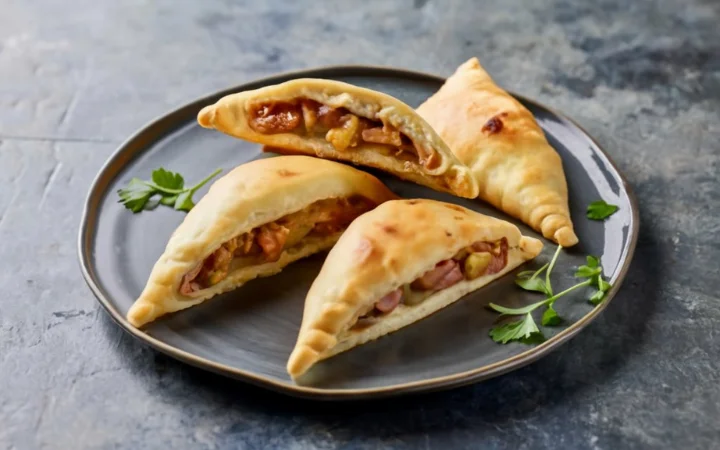
In embracing both tradition and innovation, Empanadas Venezolanas continue to evolve, captivating food enthusiasts worldwide. Their journey from a local Venezuelan staple to a global culinary sensation is a story of adaptability, creativity, and the universal language of delicious food.
Serving and Enjoyment
Serving Suggestions
Empanadas Venezolanas can be enjoyed in various ways, making them perfect for any occasion. Whether you’re hosting a party, having a family dinner, or just craving a snack, these pastries are sure to impress.
Traditional Accompaniments
Traditionally, empanadas are served with a variety of sauces and sides, as demonstrated in this Living Sweet Moments recipe for Venezuelan Beef Empanadas, which includes ideas for accompaniments. A popular choice is guasacaca, a Venezuelan avocado-based sauce, which adds a creamy and tangy flavor. Other common accompaniments include fresh salsa, hot sauce, and creamy garlic sauce. Additionally, they can be paired with a refreshing salad or some fried plantains for a complete meal.
Modern Pairings
In the realm of modern cuisine, Empanadas Venezolanas are being paired with a wide range of sides and beverages, much like the diverse pairings explored in our guide to Costco spring rolls. For a casual setting, try serving them with craft beers or tropical cocktails. If you’re aiming for a more sophisticated experience, pair them with a light, crisp white wine. The possibilities are endless, allowing for creative and delicious combinations.
Enjoying Empanadas Venezolanas
Empanadas are more than just food; they’re a social experience. Sharing these pastries with friends and family is a wonderful way to connect and create memories.
The Social Aspect
In Venezuela, empanadas are often enjoyed as a part of social gatherings, be it a family breakfast, a beach day, or a festive celebration. They’re a food that brings people together, fostering a sense of community and warmth.
Empanadas in Venezuelan Celebrations
Furthermore, empanadas are a staple in Venezuelan celebrations. During holidays and festivals, you’ll find them being served as a symbol of hospitality and joy. They’re a way to celebrate Venezuelan culture and heritage, making every bite a celebration of tradition and flavor.
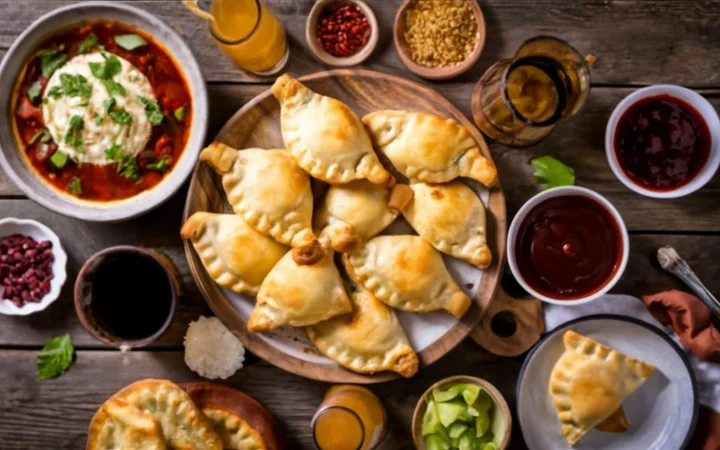
In the next section, we’ll answer some frequently asked questions about Empanadas Venezolanas. Stay tuned for insights into this beloved Venezuelan dish, as we address common queries and curiosities!
Frequently Asked Questions
Empanadas Venezolanas, with their rich flavors and cultural significance, naturally spark curiosity and interest. Here, we delve deeper into some of the most common questions about these beloved pastries.
What are the most popular fillings for empanadas venezolanas?
While cazon, cheese, beef, chicken, and black beans are among the most popular fillings, you can find more ideas in this Allrecipes Beef Empanadas recipe, regional specialties offer a wide array of choices. In some areas, you might find empanadas filled with chorizo, a spicy sausage, or even more exotic fillings like rabbit or capybara during certain festivals. Vegetarian and vegan options are also gaining popularity, with fillings like lentils, mushrooms, or a mix of vegetables.
How do empanadas venezolanas differ from other Latin American empanadas?
Apart from the corn flour dough, Empanadas Venezolanas are unique in their cooking method – they are typically fried, not baked. This frying technique gives them a distinctively crispy exterior, setting them apart from the often-baked empanadas found in other Latin American countries. Additionally, the fillings and seasoning in Venezuelan empanadas are reflective of the country’s diverse culinary influences, from indigenous to European and African.
Can empanadas venezolanas be made in advance and frozen?
Yes, Empanadas Venezolanas are perfect for make-ahead meals. To freeze, assemble the empanadas but do not fry them. Place them on a baking sheet, ensuring they don’t touch, and freeze until solid. Then, transfer them to a freezer-safe bag or container. When ready to eat, fry them directly from frozen, adjusting the cooking time as needed. This method preserves their flavor and texture, making them a convenient and delicious option for quick meals.
Through these expanded FAQs, we hope to have provided a deeper understanding and appreciation of Empanadas Venezolanas. Their versatility, rich history, and delicious flavors make them a cherished dish in Venezuelan cuisine and beyond.
Conclusion
Embracing the Richness of Empanadas Venezolanas
Empanadas Venezolanas are more than just a culinary delight; they are a symbol of Venezuelan culture, tradition, and community. From their humble origins to their modern-day variations, these pastries embody the rich tapestry of Venezuela’s history and the creativity of its people.
The journey through the world of Empanadas Venezolanas reveals not only the diversity of ingredients and preparation methods but also the universal appeal of this beloved dish. Whether enjoyed in a traditional setting or as part of a modern fusion cuisine, empanadas continue to captivate the hearts and palates of people everywhere.
In essence, Empanadas Venezolanas are a testament to the power of food in bringing people together, celebrating heritage, and creating new culinary experiences. As we savor each bite, we partake in a tradition that spans generations, a tradition that is as flavorful as it is meaningful.
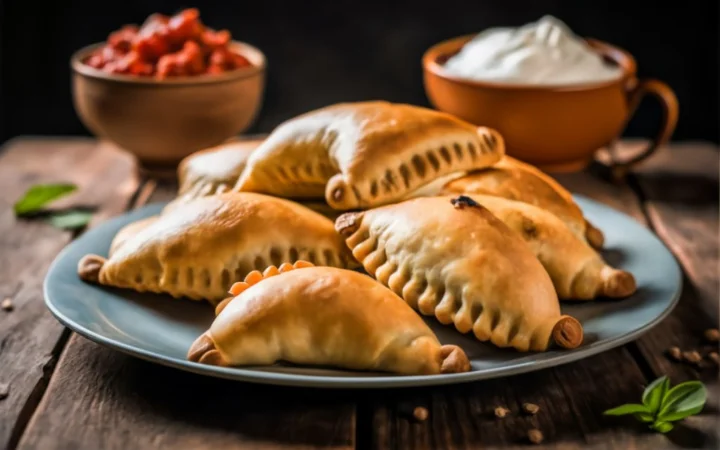
Thank you for joining us on this flavorful journey through the art of making Empanadas Venezolanas. May your kitchen be filled with the warmth and joy that these wonderful pastries bring!
